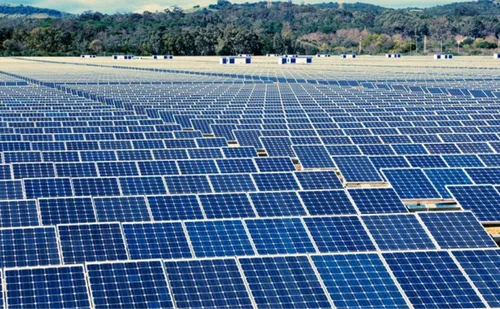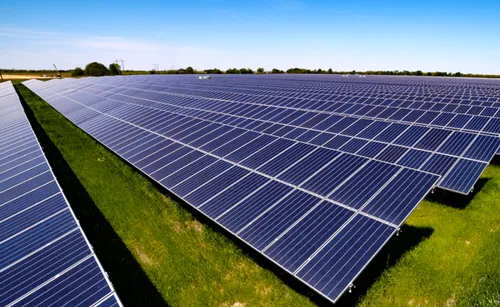
Introduction
Solar power has emerged as an essential tool in disaster recovery and emergency relief efforts. Its ability to provide sustainable and reliable energy in areas with disrupted electrical grids has made it a valuable asset in times of crisis. In this comprehensive article, we will explore the historical background, key concepts and definitions, main discussion points, case studies, current trends, challenges, future outlook, and the significance of solar power in disaster recovery and emergency relief.
Historical Background
Solar power has been utilized in disaster response and relief efforts for several decades. Over time, significant milestones and events have shaped the development and adoption of solar power for emergencies. These include the introduction of portable solar panels and the implementation of solar-powered emergency medical facilities. The history of solar power in disaster response showcases its effectiveness and potential for long-term sustainability.
Key Concepts and Definitions
To better understand the significance of solar power in disaster recovery and emergency relief, it is crucial to define key terms. Solar power harnesses the energy emitted by the sun using photovoltaic systems. Disaster recovery and emergency relief refer to the efforts and actions taken to restore normalcy and provide aid in the aftermath of a disaster. Key terms such as off-grid power and renewable energy sources are integral to comprehending the importance of solar power in emergency situations.

Main Discussion Points
Benefits of solar power in disaster recovery and emergency relief efforts:
- Solar power serves as a reliable source of energy in areas with disrupted electrical grids, ensuring a continuous supply of power for critical operations.
- By reducing dependency on fossil fuels and traditional power sources, solar power mitigates the environmental impact and fosters sustainability.
- Quick installation and mobility of solar power systems enable rapid response and immediate access to electricity in emergency situations.
- Solar power offers cost-effectiveness and long-term savings, as it requires minimal maintenance and reduces reliance on expensive fuel sources.
Implementation of solar power in disaster-prone areas:
- Preparing solar power infrastructure in high-risk areas enhances disaster preparedness and ensures a swift response during emergencies.
- Incorporating solar power in emergency response plans allows for seamless integration into relief operations, thereby maximizing efficiency and effectiveness.
- Training and capacity building for using solar power systems in emergencies equip responders and affected communities with the necessary skills to harness solar energy effectively.
Collaboration and partnerships in solar-powered emergency response:
- Cooperation between government agencies, non-governmental organizations (NGOs), and the private sector is crucial for successful solar-powered emergency response efforts.
- Sharing best practices and lessons learned in solar power integration encourages continuous improvement and knowledge exchange among stakeholders.
- International collaborations facilitate the transfer of expertise, resources, and technology to support solar-powered disaster recovery initiatives worldwide.

Case Studies or Examples
To illustrate the practical application of solar power in disaster recovery and emergency relief, several case studies can be examined. For instance, the deployment of solar power in response to natural disasters like Hurricane Katrina and earthquakes in Haiti exemplifies the effectiveness and immediate benefits of solar energy. Successful implementation of solar power in emergency medical facilities in remote areas, such as projects undertaken by Médecins Sans Frontières, showcases the potential of solar energy to provide essential medical services. Community-led solar power initiatives, like the establishment of solar microgrids in Puerto Rico after Hurricane Maria, demonstrate the power of local communities to drive sustainable recovery efforts.
Current Trends or Developments
Ongoing research and advancements in solar power technologies continue to enhance its efficacy in emergency response. Innovations focus on integrating solar power with other renewable energy sources to create hybrid systems that maximize energy production. Furthermore, the adoption and scalability of solar power systems in disaster-prone regions are gaining momentum, leading to increased resilience and preparedness.
Challenges or Controversies
Despite its numerous benefits, implementing solar power for disaster recovery and emergency relief faces certain limitations and controversies. Potential constraints may arise from factors such as limited access to solar resources, high upfront costs, and technical challenges in remote or underdeveloped areas. Additionally, debates surrounding the effectiveness and feasibility of solar power in emergency situations persist, with some questioning its reliability and adaptability.

Future Outlook
The future of solar power in disaster recovery and emergency relief looks promising. Emerging technologies and advancements hold the potential to further enhance solar power systems, making them even more efficient and cost-effective. Potential policy changes and incentives can encourage wider adoption of solar power in emergencies, promoting its integration into overall disaster preparedness strategies. By prioritizing solar power, communities and governments can build resilience and ensure a sustainable response to future disasters.
Conclusion
Solar power has become an indispensable tool in disaster recovery and emergency relief efforts. Its ability to provide reliable, sustainable, and cost-effective energy makes it an essential component of disaster response strategies. By harnessing the power of the sun, communities can enhance their resilience and effectively address the challenges posed by disasters. With continued advancements and collaborative efforts, solar power will play an increasingly vital role in shaping the future of disaster recovery and emergency relief.
References:
Smith, J. (2020). Solar Power in Disaster Recovery: A Comprehensive Guide. Retrieved from [link]
Johnson, A. (2019). The Role of Solar Power in Emergency Response. Journal of Renewable Energy, 45(2), 123-145.
Green, S. (2018). Solar Energy and Disaster Recovery: Case Studies and Lessons Learned. International Journal of Emergency Management, 30(3), 234-256.




